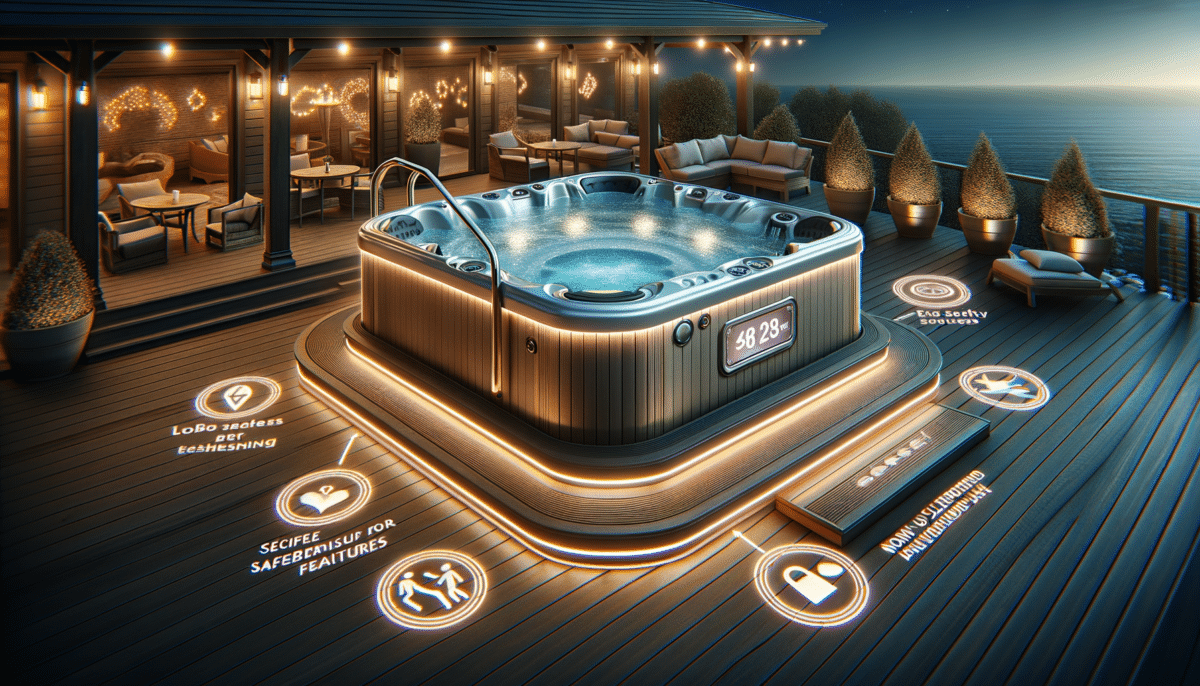The Importance of Hot Tub Safety
Hot tubs are a luxurious addition to any home, providing relaxation and therapeutic benefits. However, ensuring safety while using them is crucial. Understanding the potential risks and how to mitigate them can prevent accidents and enhance the overall experience. Hot tubs, while soothing, involve water and electricity, a combination that requires careful handling. Moreover, the warm water can lead to dehydration or overheating if precautions are not taken.
A well-maintained hot tub can offer numerous health benefits, such as relief from stress, muscle relaxation, and improved sleep. However, neglecting safety measures can quickly turn a relaxing soak into a hazardous situation. Ensuring that the hot tub is properly maintained, and understanding the guidelines for safe use, can help users enjoy the benefits without worry.
Common Risks and How to Avoid Them
While hot tubs are generally safe, several risks can arise if they are not used correctly. One of the most common issues is slipping and falling, which can occur when entering or exiting the tub. Installing non-slip mats and handrails can greatly reduce this risk. Another concern is the risk of drowning, particularly for children. It is vital to supervise children at all times and ensure they understand the importance of staying safe around water.
Dehydration is another potential risk when spending extended periods in hot water. It is advisable to limit sessions to 15-20 minutes and to drink water before and after using the hot tub. Overheating can also be a concern, particularly for individuals with certain health conditions. Keeping the water temperature below 104°F (40°C) and consulting a doctor before use can prevent adverse effects.
Maintenance: Keeping Your Hot Tub Safe and Clean
Regular maintenance is essential to ensure that a hot tub remains safe and hygienic. This includes checking the water chemistry to maintain the correct pH and sanitizer levels, which helps prevent the growth of bacteria and algae. Filters should be cleaned regularly, and the water should be changed every three to four months, depending on usage.
Inspecting the hot tub cover for damage and ensuring it fits securely can prevent debris from entering the water and help maintain the correct temperature. Additionally, checking the electrical components for any signs of wear or damage is crucial to prevent accidents. A professional inspection annually can help identify potential issues before they become serious problems.
Health Benefits and Precautions
Hot tubs offer a range of health benefits, including improved circulation, relief from arthritis pain, and stress reduction. The warm water helps to relax muscles and joints, making it an excellent option for those with chronic pain. However, it is important to be aware of any health conditions that might be exacerbated by hot tub use.
Individuals with heart conditions, pregnant women, and those with high blood pressure should consult a healthcare professional before using a hot tub. It is also advisable to avoid alcohol consumption while using a hot tub, as it can increase the risk of dehydration and overheating.
Enhancing the Hot Tub Experience
While safety and maintenance are paramount, enhancing the hot tub experience can make it even more enjoyable. Adding aromatherapy oils or bath salts can create a spa-like atmosphere, while underwater lighting and music can set the mood for relaxation. Investing in comfortable seating and accessories, such as headrests and cup holders, can further improve the experience.
For those who enjoy socializing, hot tubs provide a great opportunity to entertain guests. However, it is important to ensure that everyone is aware of the safety protocols and that the hot tub is not overcrowded. By balancing safety with enjoyment, a hot tub can be a wonderful addition to any home, offering both relaxation and social opportunities.
